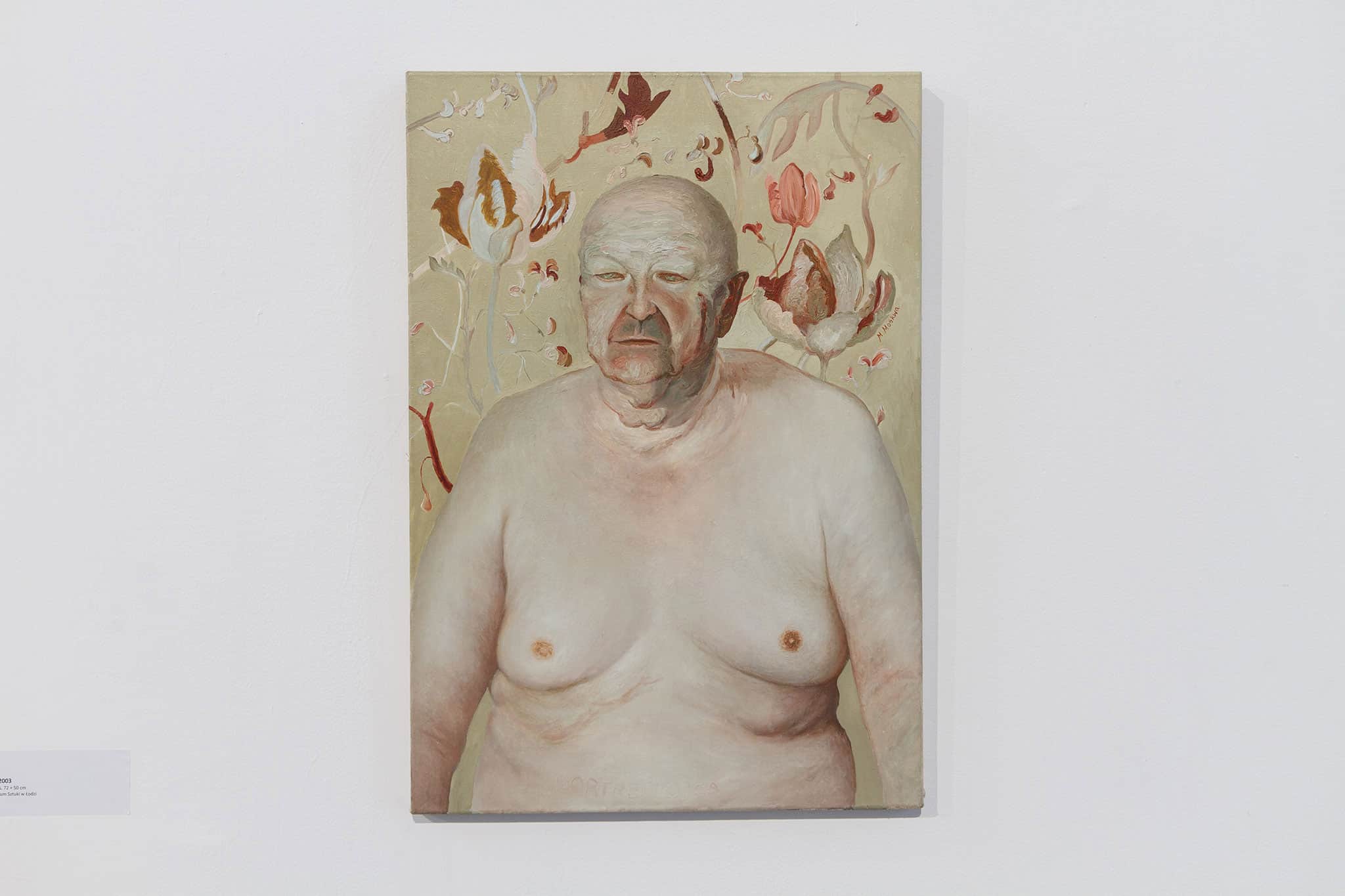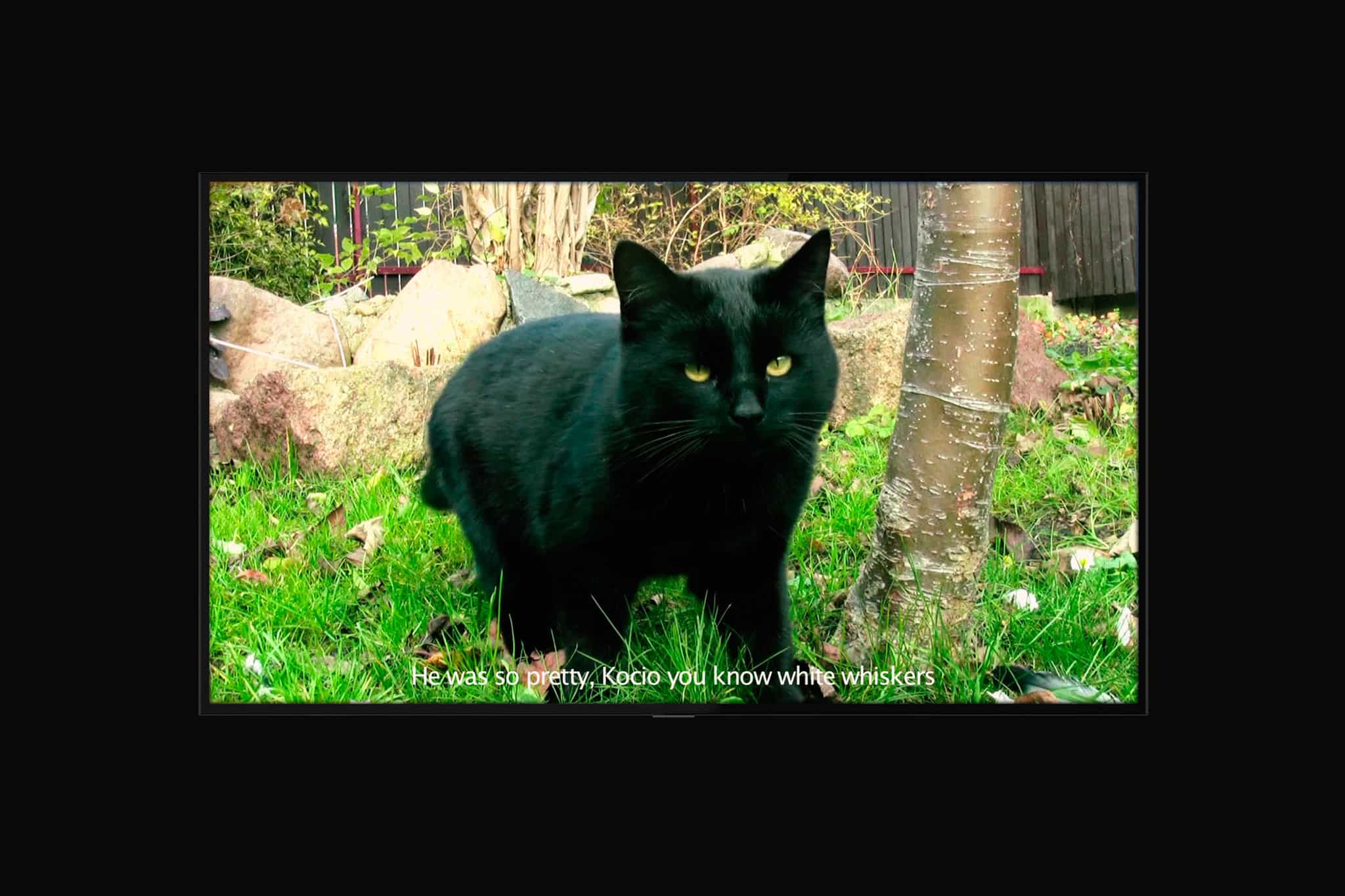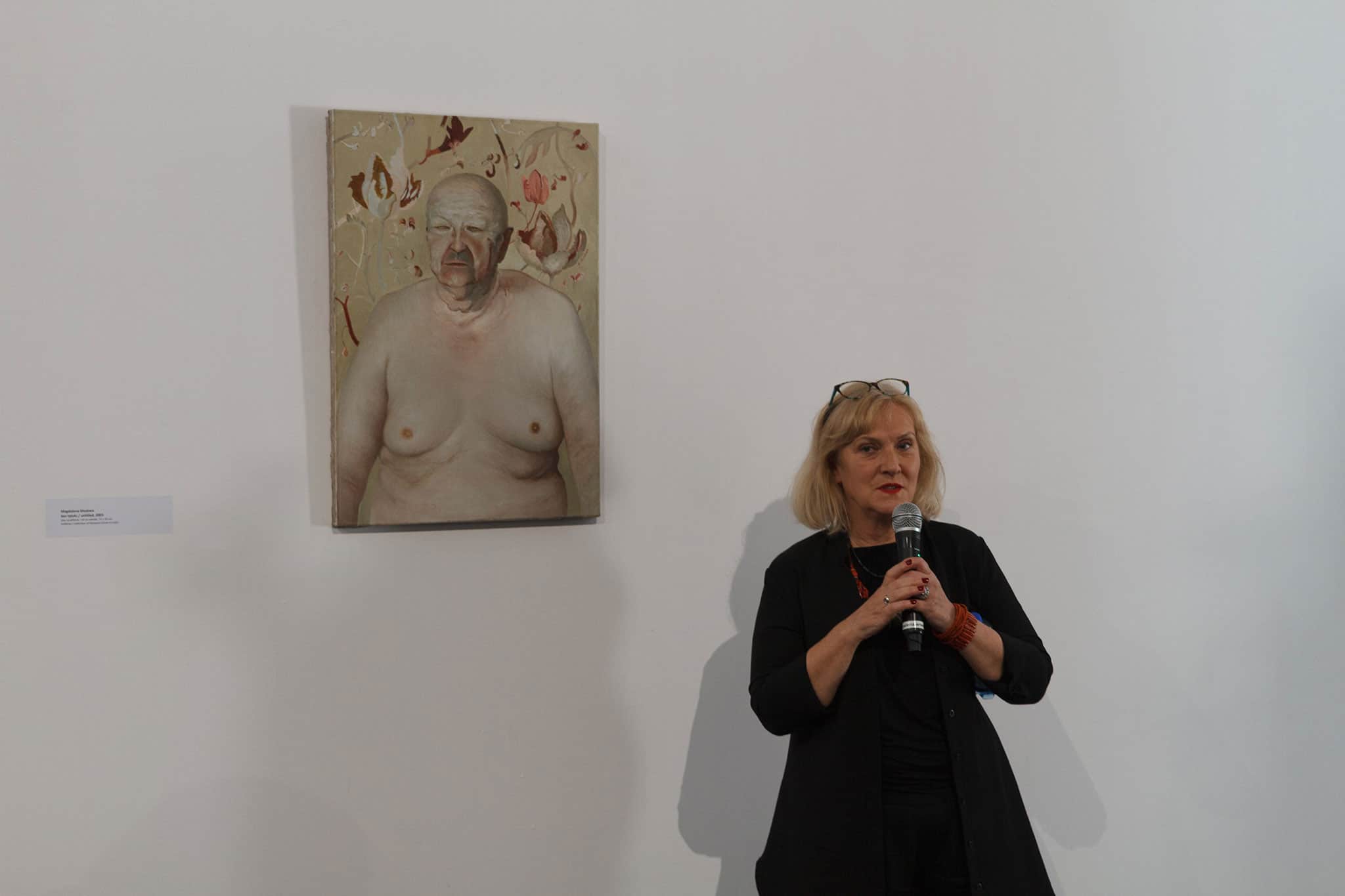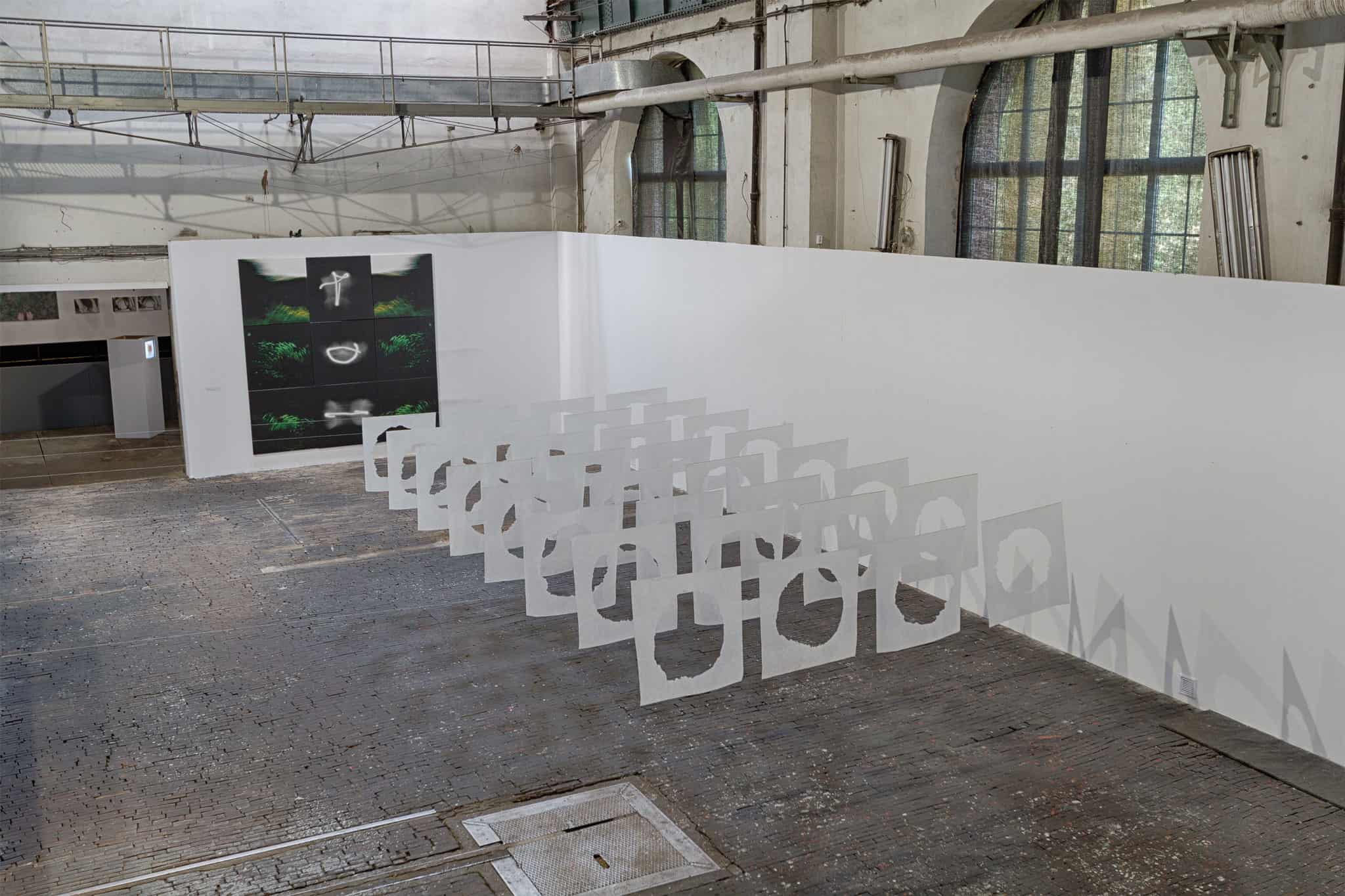“Stories of Old Age”, exhibition, the Arsenal Gallery in Białystok, photos by Maciej Zaniewski, from the archives of Gallery Arsenal in Bialystok
Together with Magdalena Godlewska-Siwerska, the curator of the exhibition entitled “Stories of Old Age” presented at the Arsenal Gallery in Białystok, we took some time to discuss wrinkles and the passing time. We also analysed what visual artists actually have to say about the old age and discuss how to avoid stereotypical thinking about the old age.
SK: The topic of “Stories of Old Age” exhibition is human ageing. Old age can be understood differently when we look at it from different perspectives, i.e. biology, economy, psychology, society. Why have you decided to prepare an exhibition on this particular topic?
MGS: I have to admit that it is the result of my personal experiences. When you are somewhere halfway of your life journey, a new perspective suddenly opens up. All of a sudden, you realise that your youth and beauty is not something that will stay with you forever. You start to notice people older than you and the ones extremely old and fragile. You are beginning to understand that this is what the next stage of your life will look like, that you will actually become such a person at some point. Old age is no longer just about your grandpa and grandma.
In Polish media, old age is a really important issue, but it is an awkward topic for discussion at the same time. The seniors are depicted as decrepit older men and women who need constant care and attention, who struggle to communicate effectively and will likely be abused and exploited at a certain point. They are the ones who do not always realise what is actually happening around them and are addicted to painkillers… To put it bluntly, they are just a big worry for the rest of us. When I think of this omnipresent image, I just want to rise in rebellion. These days it is especially vital because we live much longer than in the past and we are the ones who can make life in our 60s, 70s, 80s and even 90s better. Of course, if we are spared from diseases or random accidents that degrade us physically regardless of age.
Books by elderly writers and their diaries written practically until their death made an enormous impression on me some time ago. Functional difficulties are, of course, part of their journey described there; however, the most engaging thing for me was becoming increasingly more aware of how intellectual power positively influences the physical condition of our bodies. I became really curious about what visual artists tell us about the old age and if it is any different from the reports of senior writers.

Magdalena Moskwa, “Stories of Old Age”, exhibition, the Arsenal Gallery in Białystok, photos by Maciej Zaniewski, from the archives of Gallery Arsenal in Bialystok
SK: When we are young and full of energy we rarely think about our life in, let’s say, 60 years. For the young people old age equals wrinkled faces and, for some, lonely existence. What does old age look like in works displayed at the exhibition at the Arsenal Gallery in Białystok?
MGS: For me there is nothing wrong about having wrinkles. We are working for them our whole life. There are good wrinkles showing that we used to smile and kiss, but also the “not so positive” ones, commemorating the periods we were depressed or being remnants of addiction. I see wrinkles as evidence of our existence. They make our faces more distinctive and expressive, encourage others to think about our nature and emotions.
I would really like to avoid stereotypical thinking about the old age. People I know reacted in very different ways when they learned that I was working on an exhibition about the old age. Some, especially the ones who are older than me and more experienced in this matter, were concerned about how I was going to present seniors. Others gave me inquiring looks with the question implied: “so how old you really are?”. My personal opinion is that the old age is just a stage of human life and should be valued as much as any other stage. The reason we perceive the old age as more challenging and somehow terrifying may be the fact that life at that point is coming to an end. I really hope that at the exhibition I managed to present the old age from a more comprehensive perspective, without the usual dread. I also would like my exhibition to help the audience understand the old age, at least just a little bit. I really wish that old age is referred to with respect and some degree of carefree feeling, with no fear. I realize that to achieve the latter is not so easy. In his work “Starość nie radość” (Old age is not joyful) Jan Świdziński resorts to the convention of a joke and presents the old age with tongue in cheek.
I would rather not tell you what the view of the old age that my exhibition presents is. I think that I am not an appropriate person to do it because I am not as detached as a critic or a reviewer would be.
I tried to present certain issues, for example, how families experience old age, showing the perspective of people whose loved ones, e.g. parents or grandparents, are old.
Małgorzata Niedzielko is the author of work entitled „Deconstructing a father. Hommage à Louise Bourgeois”, 2019, which is an object made of clothes/sculpture, 150 × 50 cm; tailor’s dummy mannequin, 170 × 50 × 35 cm; steel frame, “ Like L.B. I encapsulated my family emotions in a frame. I started to make clothes/a sculpture. The process included a lot of destroying, transforming, cutting and tearing apart. I mended places which were worn through and torn by sewing, darning and applying patches on them. In the process, I felt affection and I was very focused. Stains required bleach to be applied, which made the material used for creating the sculpture a bit faded. It was bluish, had different shades of white and some yellowish spots. Deconstruction was, in this case, an attempt at preserving something for posterity…”
At the exhibition there is one picture by Magdalena Moskwa (from the collection of Muzeum Sztuki in Łódź) which has no title and was created in 2003. It features an old naked man; his body is presented from his waist up. On his belly the following words are written: Portrait of a father. Since her early days as visual artist Magdalena Moskwa has been focusing on corporeality. A characteristic motif for her are posing women, embellished with lace and jewellery. Portrait of a father is so far the only portrait of a man she painted.
Marzanna Morozewicz, the author of three photographs from the series “Nieuchronne. Stąpanie. Grupa Laokona” (Inevitable. Treading. Laocoön Group), focuses on autobiographical narration between parents and children, but also between the young and the old. The eponymous ‘inevitable’ also means unavoidable, which stresses the fact that there is no way to avoid living through your old age, but also to abandon those who are experiencing their late years right now.
Kobas Laksa presents photographs taken during photo workshops named “Unbearable lightness of body images” (Nieznośna lekkość wyobrażeń cielesności). Participants in this workshop were teenagers, as well as their grandparents. The artist wanted to confront the ideas of old age as we see it in mass media and advertisements with the way it feels when you are old.
Koji Kamoi, Natalia LL, “Stories of Old Age”, exhibition, the Arsenal Gallery in Białystok, photos by Maciej Zaniewski, from the archives of Gallery Arsenal in Bialystok
Ewa Zarzycka, “Stories of Old Age”, exhibition, the Arsenal Gallery in Białystok, photos by Maciej Zaniewski, from the archives of Gallery Arsenal in Bialystok
SK: Another element of your exhibition are works by artists for whom the notion of “an old person” does not evoke negative feelings anymore.
MGS: Natalia LL is a conceptual artist and one of the originators of the global feminist movement, the author of photographs, video performances and experimental films. One of her most recognisable works are “Consumer Art” and “Post-consumer Art”. Besides body art, she has long been interested in religion, philosophy and human existence. Recently the main topics of her works are passing, finiteness and death. We can clearly see these motives in a canvas photo print from 2017 entitled “Dulce – post mortem”, which presents spirit walk in a symbolic way.
In his installation “Przeciąg/Starość” (Draught/Old Age), which took him more than forty years to complete (1975–2018), Koji Kamoji tackles the universal human experience of passing the time and deterioration of body condition. Despite the seriousness of the topic, the artist is by no means pathetic, terrified or traumatised by it. Thanks to maintaining discipline and strong intuition, he successfully combines art, life and spiritual experiences into a coherent whole. He ascribes a metaphysical goal to art and his presence in it — to reveal the truth of being, even the most difficult one, yet always determined by the will to live.
Andrzej Strumiłło, the oldest person whose works are presented at my exhibition, is a compulsive artist who creates because he needs it like air to breathe. He works all day long and into the nights, with just short breaks for sleep. He adds inscriptions to his drawings, the “drawn at night”, “drawn after a sleepless night” and “I just have to work” kind of messages.

Marznna Morozewicz (photo), Małgorzata Niediełko (object) “Stories of Old Age”, exhibition, the Arsenal Gallery in Białystok, photos by Maciej Zaniewski, from the archives of Gallery Arsenal in Bialystok
SK: Another important perspective you show are philosophical deliberations…
MGS: Philosophy is what we can see in Katarzyna Kozyra’s “The Rite of Spring” (1999–2002), i.e. the author’s reinterpretation of the ballet by Russian composer Igor Stravinsky, which was originally choreographed by Vaslav Nijinsky and which was first performed in Paris in 1913. The underlying idea behind Kozyra’s work is contrasting the expressive, convulsive and complex movements with performers, who are elderly dancers. It provides for a dramatic picture of expectations and desires which go against motor function limitations and degradation of the body. The cold white background provides the scenery for the wrinkled bodies – objects which combine into clumsy machinery suspended in a vacuum – and makes the audience feel odd, frightened and distanced from what they have in front of their eyes. The helpless, somewhat symbolic bodies of the elderly people involved in strenuous physical effort reveal the essence of the proto-Slavonic rite, where destruction becomes necessary as an offering in the pursuit of a revival.
In the work “Kiedyś były czarne” (They used to be black) Krystyna Piotrowska is reflecting on the passing time. She presents several dozen portraits of people of prime working age, the youth and children. Next to their names are numbers which indicate the year when a given person was born. Today these people are about ninety years old, the youngest of them are in their seventies.

Jan Szewczyk, “Stories of Old Age”, exhibition, the Arsenal Gallery in Białystok, photos by Maciej Zaniewski, from the archives of Gallery Arsenal in Bialystok
SK: The realisation of time passing is by no means a trivial observation. In the exhibition, this motif became a central theme, which is analysed from many different angles.
MGS: Yes, that was an important aspect for me to present. For instance, the video “Homemade Candles” (2013) by Daniel Rumiancew features Stanisław, a bee-keeper who makes big candles used for traditional religious celebrations. He makes them in his own kitchen using beeswax as the raw material. The candle making process is very laborious, but it takes place in a homey atmosphere of a familiar kitchen workshop. Candles are shaped using Stanisław’s own vacuum cleaner hose. Although everything about this process seems so simple and ordinary, when we watch it we have the impression that we are witnessing a unique ritual or magic practices which result in the creation of objects with extraordinary properties. These celebratory wax candles are a central element during numerous religious rites and are indispensable for every practising Catholic. For those people, candles symbolise the most important celebrations and events in their life. Every such person has a candle kept in their house for their entire life. These candles are believed to have magic powers, for example, to protect homes from lightning strikes. They are also lit at the bedside of those who are dying and those who have just passed away (based on: Agata Goljat, Rzemiosło niedoskonałe. O Domowym wyrobie świec Daniela Rumiancewa, „Kwartalnik Rzeźby OROŃSKO” 2016, No. 3, pp. 18–22)
“Singing Lesson” (2003) by Artur Żmijewski is often presented in the context of Polish-Jewish relations. The video features old Jews who were born in Poland and who found their new homeland in Israel after being forced to leave Poland following the trauma of World War II. […] The artist asked these people to „recollect” and sing Polish songs of the olden days. Żmijewski looks closely at human beings, their spiritual world and thinking processes, which are closely connected to their bodies – the sick, disabled and ageing ones. The video was shot at the hospital’s geriatric ward and a club for senior citizens.
* The text was taken from a book by Izabela Kopania Zbiór otwarty. Prace z Kolekcji II Galerii Arsenał w Białymstoku i Podlaskiego Towarzystwa Zachęty Sztuk Pięknych, Białystok 2012
The last topic I wanted to present at my exhibition are attitudes towards the old age by representatives of both sexes. This issue is depicted in a popular work by Ewa Partum created in 1979 and entitled “Zmiana. Mój problem jest problemem kobiety” (Change. My problem is a problem of a woman) which is now part of the collection of Muzeum Sztuki in Łódź. The movie shows the performance by Ewa Partum entitled “Change. My problem is a problem of a woman”, which took place in 1979 in Art Forum Gallery in Łódź. A group of make-up artists attempted to make half of the artist’s face and body look older and all this was watched as live event by an audience. During the performance the audience could hear in the background statements by Valie Export and Ulrike Rosenbach – artists who talk about sexes in their works. Besides that, there were voice comments by Ewa Partum herself and an inscription made by her. This is what the artist said about her performance: “On the floor, I have written: a male artist has no biography. However, a female artist has one. It is important if she is young or old” (https://artmuseum.pl/en/filmoteka/praca/partum-ewa-change-my-problem-is-a-problem-of-a-woman)
The men’s point of view is presented in the work entitled “Harnessed Swimmer” by Dominik Lejman. This work is a combination of a video screening and painting on canvas. In the centre we can see a silhouette of an elderly man tied into a harness who struggles to swim in a pool shaped like a coffin. Despite his laborious efforts he is not able to move forward even a tiny bit. Both Ewa Partum and Dominik Lejman use clichés related to females and males. Women are usually anxious about their beauty fading and themselves becoming less womanly with their new physical self. When it comes to men, their strength comes from physical power, so losing it is the ultimate challenge.
On the other hand, these attributes lose their significance when we become very old and vulnerable.

Daniel Rumiancew, “Stories of Old Age”, exhibition, the Arsenal Gallery in Białystok, photos by Maciej Zaniewski, from the archives of Gallery Arsenal in Bialystok
SK: At the exhibition works by two groups of artists are combined – those born in the 1920s and 1930s (Kamoji, Natalia LL, Świdziński, Strumiłło) and those born in the late 1960s and early 1970s. Why didn’t you decide to present works by young artists born in the 1980s and the 1990s as well? Does this mean that young artists are not eager to present the topic of ageing and passing time in their works?
MGS: In my opinion, old age becomes an interesting topic for an artist at a later stage of his/her life, when it becomes more realistic and can be felt looming over them. The interest towards it may also be stirred as a result of a close personal relationship with an elderly family member. In the exhibition, we present a video “Takie koty” (Such cats) made in 2009 by Jan Szewczyk, who was born in the early 1980s. He asked his grandmother suffering from Alzheimer’s disease to tell in front of a camera how she met his grandfather. The narration about family story quickly gives way to a conversation with a cat.
It is true that the artists’ age was an important factor when I selected artists from the older generation. My exhibition does not comprehensively cover all possible aspects of the old age.
SK: Technological advances come upon us so quickly and make the generation gap increasingly bigger. Old age is a passé topic for mass media culture. Taking this into account, how would you encourage the audience to visit the “Stories of Old Age” exhibition?
MGS: Showing old age as the time when you are weak and clumsy is indeed passé. It is passé to underestimate and forget about the needs of the elderly because we have to remember that they influence the consumer goods and services market to an increasingly greater extent. It is passé to ignore the opportunities which cooperation of people from different generations creates and to give up on exchanging experiences. I am not questioning the progress and development of technology. Our civilisation is at its turning point and on the brink of climate catastrophe. We should remember that the elderly have recycling genetically encoded in them, they instinctively save energy, care about the natural environment and their surroundings. They also intuitively find solutions at the moment of crisis and are known for the ability to make something out of nothing. They can share this knowledge with us if we offer them support with new technologies.

Artur Żmijewski, “Stories of Old Age”, exhibition, the Arsenal Gallery in Białystok, photos by Maciej Zaniewski, from the archives of Gallery Arsenal in Bialystok
SK: Can you name any particular work presented at the “Stories of Old Age” exhibition which we will not be able to forget?
MGS: I wish our visitors did not overlook the sound recordings, which can be listened to through headphones. For many years I have been admiring works by Louise Bourgeois. I feel personally attached to her art. I saw the exhibition of her works for the first time in 2007 during the Venice Biennale and I was instantly inspired by it. I was thrilled with her works and their innovative nature which reminded me of works by representatives of the young generation. It was marvellous that she managed to achieve such an effect at her advanced age. I just had to find the way to show Louise Bourgeois at my “Stories of Old Age” exhibition. I asked Małgorzata Niedzielko to help me in this respect and she created “Hommage à Louise Bourgeois”. It is moving, multi-layered and conciliatory… There is one more element which signifies the presence of Louise Bourgeois. It is very discreet but also truly meaningful. Dominik Lejman gave me a recording of Louise’s voice, which he made in 2002 during one of the Sunday salons organised at her house in New York, which was also the registered seat of The Easton Foundation she established. Her recorded voice is extremely weak and fragile. We can only hear it from a distance, drowned out by conversations of others. It is as if we were listening to someone speaking to us from the other side.
“Stories of Old Age”
exhibition curated by Magdalena Godlewska-Siwerska
Arsenal Gallery in Białystok
31 May 2019 – 15 September 2019
Participating artists:
Koji Kamoji, Katarzyna Kozyra, Kobas Laksa, Dominik Lejman, Natalia LL, Marzanna Morozewicz, Magdalena Moskwa (work from the collection of Muzeum Sztuki in Łódź), Małgorzata Niedzielko, Ewa Partum (work from the collection of Muzeum Sztuki in Łódź), Krystyna Piotrowska, Daniel Rumiancew, Andrzej Strumiłło, Jan Szewczyk, Jan Świdziński, Ewa Zarzycka, Artur Żmijewski (work from Collection II of Arsenal Gallery), PĘDZEL (painting section at The University of the Third Age in Białystok)
Krystyna Piotrowska, “Stories of Old Age”, exhibition, the Arsenal Gallery in Białystok, photos by Maciej Zaniewski, from the archives of Gallery Arsenal in Bialystok
Katarzyna Kozyra, “Stories of Old Age”, exhibition, the Arsenal Gallery in Białystok, photos by Maciej Zaniewski, from the archives of Gallery Arsenal in Bialystok
Magdalena Moskwa, “Stories of Old Age”, exhibition, the Arsenal Gallery in Białystok, photos by Maciej Zaniewski, from the archives of Gallery Arsenal in Bialystok













